WORD NEWS
The US-led invasion of Iraq and Saddam’s Arab legacy | The Iraq Conflict: 20 years on Information
Within the eyes of many Arabs, Saddam Hussein, the previous dictator of Iraq, was a real chief who stood as much as Western imperialism, the Israeli occupation of Palestine and international intervention within the area.
However for many Iraqis, Saddam was a tyrant whose 25-year reign from 1979 to 2003 was marked by brutal authoritarianism, repression and injustices, particularly among the many nation’s Shia and Kurdish communities.
Twenty years after the 2003 United States-led invasion of Iraq which, in former US President George W Bush’s phrases, aimed to “free Iraqi folks” of their ruler’s oppression, Saddam’s reminiscence stays divisive and polarising. However to many, the financial and political chaos unleashed by the invasion lionised Saddam and his legacy greater than ever.
“Saddam embodied the picture of the strongman who stood as much as the US, Israel, and Iran – all the standard ‘baddies’ within the [regional] narrative,” stated Fanar Haddad, an professional on Iraq and assistant professor on the College of Copenhagen.
“This narrative deepened after the 2003 invasion as a option to be towards the occupation and order that emerged. The fetishisation of Saddam was a backlash towards what occurred,” he advised Al Jazeera.
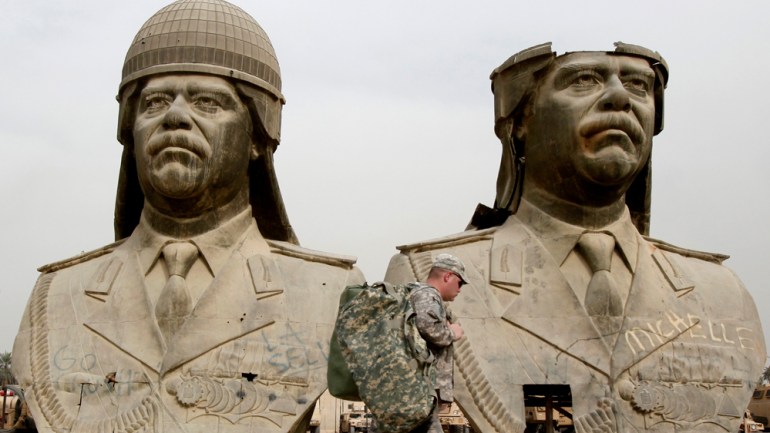
The Palestinian trigger
Earlier than Saddam got here to energy in 1979, the Baath regime he was a part of espoused anti-imperialist and anti-colonialist rhetoric, referred to as for the unification of Arab international locations, and nationalised Iraqi oil by taking on foreign-held shares within the early Seventies.
It additionally brandished the international coverage of a regional energy because it tried to diversify Iraq’s financial system and develop its academic system, infrastructure and social companies.
In 1969, the Iraqi-led Baath get together based the Arab Liberation Entrance, a small Palestinian political get together that got here to be headed by Saddam and be part of the Palestine Liberation Group (PLO). The get together espoused a pan-Arab ideology which believed the Israeli-Palestinian battle was not a very Palestinian challenge, however quite an Arab one which Iraq should combat for.
When Saddam grew to become president, it was not a shock that many Arabs supported the persona he portrayed as their defender and, particularly, a champion of the Palestinian trigger.
Within the early hours of January 18, 1991, Saddam launched a number of Scud missiles in the direction of Israel – a defining second for Saddam’s picture. The Iraqi assaults, three of which landed in Tel Aviv, got here a day after Bush unleashed an assault on Baghdad over its invasion of Kuwait.
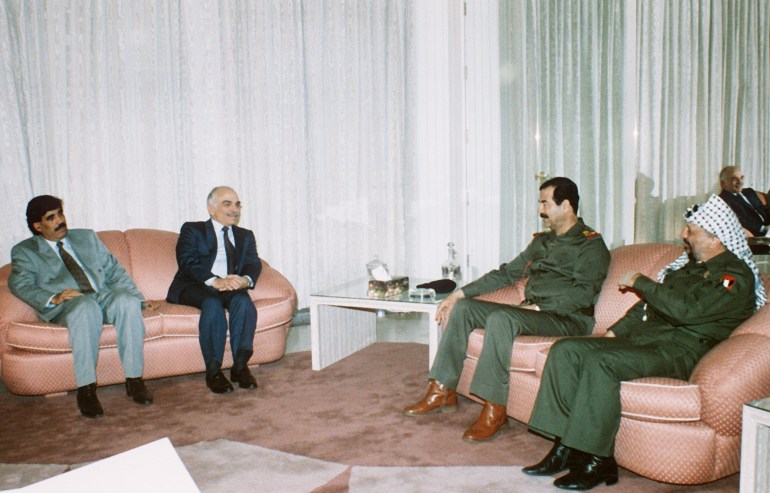
“Saddam stood up for us when no Arab chief did,” stated Manal Mustafa from Jerusalem, referring to the assaults. The 72-year-old stated she would all the time keep in mind him for that.
Saddam additionally offered hundreds of Palestinians refuge in Iraq and gave them equal rights to Iraqi residents at a time when Palestinian refugees in different Arab international locations lived in dilapidated refugee camps and had restricted entry to employment, healthcare and training. With a particular standing, Palestinians in Saddam’s Iraq have been eligible for state jobs, free training and state housing.
Rising up within the Eighties and Nineties, Tunisian journalist Hadhami Khraief noticed Saddam’s highly effective speeches in defence of Palestinian and Arab rights as an “outlet” to the frustrations of her era in the direction of what she described because the impotence of Arab leaders towards Western interventions.
“We weren’t involved about how he ruled Iraq,” stated Khraief. “We have been united by the widespread reason behind Palestine. When Saddam declared his nation’s full assist of Palestinians, we thought of him a voice for us,” she added.
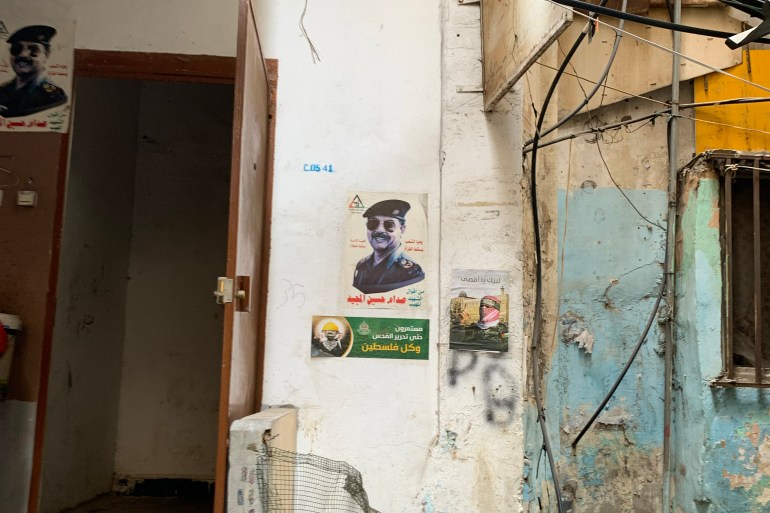
Arab ‘strongman’ and Gulf wars
In line with unbiased political analyst Mamoon Alabbasi, the primary Gulf Conflict, between Iraq and Iran, additional boosted Saddam’s regional recognition, making him stand out for “preventing international intervention” by Iran whereas different Arab leaders have been seen as “stooges put in by Western powers”.
However not like the Iran-Iraq battle, during which many Arabs supported Saddam for deterring what they noticed as an exterior risk, Arabs didn’t again Saddam’s invasion of Kuwait, a fellow Arab state, in 1990.
“Had it not been for his disastrous resolution to invade Kuwait, Saddam Hussein would have remained a nationwide hero within the eyes of most Arabs,” retired Iraqi Brigadier Normal Sobhi Tawfiq advised Al Jazeera. “And Iraq would have been spared the devastation and poverty that ensued from the inhumane [UN] sanctions and blockade.”
A UN-imposed embargo on Iraq in response to Baghdad’s invasion of Kuwait left Iraqis hungry and unable to entry medication and different fundamental wants. However whereas Iraqis suffered below the siege, Saddam’s refusal to again down glorified him within the eyes of Arabs.
Moreover, the US-led invasion of Iraq in 2003, Saddam’s execution in 2006 on the day of Eid al-Adha, the nation’s subsequent multi-layered decline, and the outbreak of sectarian violence, political instability and rampant corruption below American occupation erased many wrongs dedicated by the Iraqi dictator from Arab reminiscence.

“Opposite to what his opponents sought, the invasion of Iraq was a watershed second that saved Saddam’s legacy alive. It revealed how a lot he’d stood as much as the vanity of the West,” stated Khraief. “The day of his execution left us with nice ache,” she added.
US claims of Iraqi WMDs to justify the battle on Baghdad have been disqualified, however the invasion left a path of destruction within the area that finally gave rise to the ISIL (ISIS) armed group.
Iraqi hate combined with nostalgia
Whereas many Arabs supported Saddam earlier than and after the US-led invasion of Iraq, Iraqis largely continued to despise him for his brutal authoritarianism which remoted Iraqi society.
“Most Iraqis nonetheless take a look at him as a dictator and tyrant who destroyed and impoverished Iraq, wasted its financial potential and human assets, and brought about it to fall backwards for many years,” stated Iraqi author Saman Nouh.
Farris Harram, an Iraqi educational and former president of the Writers’ Union in Najaf, advised Al Jazeera that whereas Saddam had a sectarian method, “oppressing Shia and Kurds in a concentrated method, he was felony and unjust to all”.
Alabbasi agreed: “Earlier than the invasion, most Iraqis feared Saddam. It didn’t matter whether or not they have been Arab or Kurd, Sunni, or Shia, you hated him.”
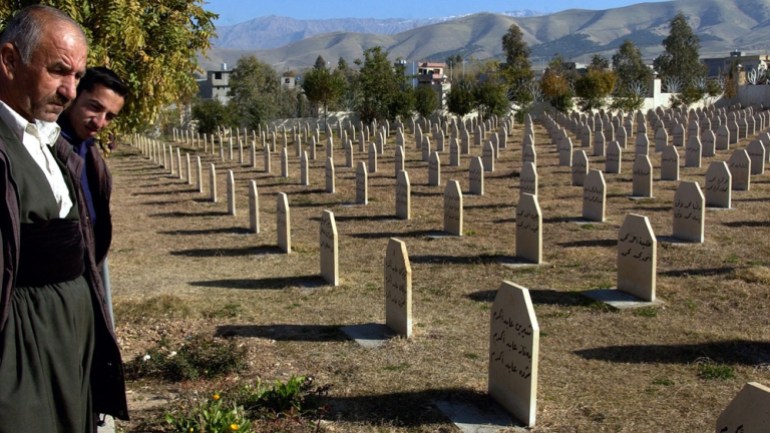
Saddam’s most famed atrocities towards his folks included killing hundreds of Kurds and Shia as he suppressed uprisings within the north and south throughout the Nineties.
The Eighties Anfal navy offensive destroyed lots of of villages and killed not less than 100,000 Kurds, largely civilians, with some estimates suggesting 180,000 folks died. Throughout that marketing campaign, Saddam ordered a chemical assault on the Kurdish village of Halabja, killing 5,000 folks – largely ladies and youngsters – on March 16, 1988.
In 1982, Saddam allegedly ordered the killing of 148 folks within the Shia village of Dujail over an assassination try towards him throughout a go to.
He was later tried by an Iraqi courtroom and hanged for the Dujail killings, after which prices towards him within the Anfal Trial have been dropped and the trial proceeded with out him.
Though many Iraqis supported their nation throughout the first Gulf Conflict, the implications of the eight-year-long battle got here at an enormous human and financial price that left many questioning whether or not it was justified.
“Many Iraqis believed that Saddam Hussein was the one who initiated the battle with Iran,” stated Tawfiq, who rose to the rank of brigadier basic within the Iraqi navy throughout the first Gulf Conflict earlier than retiring in 1988.
“The lack of tens of hundreds of younger Iraqis [during the war] and the harm of multiples extra, was cause for a lot of Iraqis to hate Saddam,” defined Tawfiq.
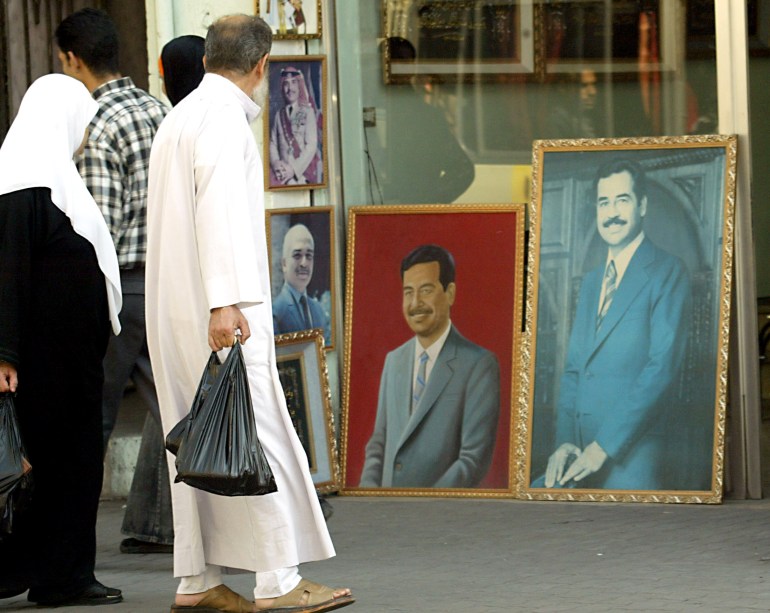
For US-based Iraqi journalist Riyadh Mohammed, Saddam was not solely in charge for the beginning of the battle with Iran, however he was additionally the rationale behind “all of Iraq’s struggling”. He despatched hundreds of Iraqi males to their dying, created an environment of concern and poverty, and sowed the primary seeds of sectarianism, stated Mohammed.
“That’s why Arabs’ love for Saddam offends us. They [Arabs] don’t know what Saddam did to us,” defined Mohammed, including that he was “very comfortable” to see Saddam’s statue toppled in Baghdad’s Firdos Sq. on April 9, 2003, in a transfer that made worldwide headlines and got here to be a logo of Western victory in Iraq.
However 20 years on from that day, many Iraqis now really feel nostalgic “a couple of time when Iraq was robust and revered”, stated Tawfiq.
“Iraq below Saddam had international affect, a developed financial system, robust dinar [local currency], welfare, housing, well being, training, bridges, roads, dams, airports, self-sufficiency and a revered passport,” stated Tawfiq. “Iraqis keep in mind that and want to return.”
Harram agreed: “Some Iraqis now view Saddam as having preserved the state’s sovereignty. They are saying his corruption and violations have been much less in comparison with what we suffered below the post-2003 regime.”
Trending
-
Bank and Cryptocurrency12 months ago
Cheap Car Insurance Rates Guide to Understanding Your Options, Laws, and Discounts
-
Bank and Cryptocurrency12 months ago
Why Do We Need an Insurance for Our Vehicle?
-

 entertainement6 months ago
entertainement6 months agoHOUSE OF FUN DAILY GIFTS
-
WORD NEWS1 year ago
Swan wrangling and ‘steamy trysts’: the weird lives and jobs of the king’s entourage | Monarchy
Please allow ads on our site
Looks like you're using an ad blocker. Please support us by disabling these ad blocker.
